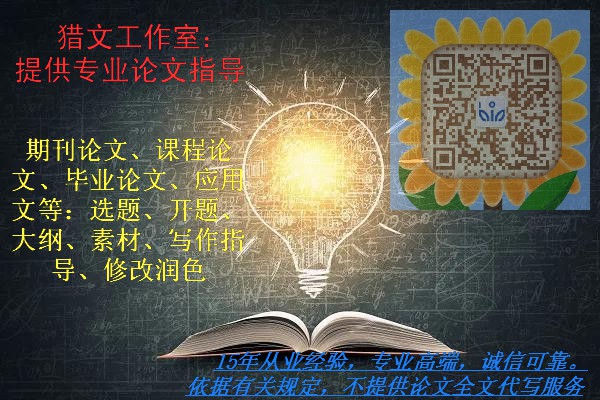
A Senior Project Submitted to
The School of Business
in Partial Fulfillment for the Degree of
Bachelor of
By
xxx
Prepared Under the Direction of Professor Flora Chu
School of Business
Northwestern Polytechnic University
47671 Westinghouse Dr., Fremont, CA 94539
August 2010
CONTENTS
Section Page
ACKNOWLEDGMENTS iii
ABSTRACT iv
1.0 INTRODUCTION 1
1.1 Objectives
1.2 Research Design Will Include
1.3 Data Analysis And Interpretation
1.4 Background
1.41 History Of Iphone
1.42 Origins
1.43 Apple Financial History
2.0 MARKET
2.1 Smartphone Markets
2.2 Iphone Global Market Share
2.3 Apple Report Second Quarter Results
2.4 Market Abroad
3.0 CONCLUSION
ACKNOWLEDGMENTS
I would like to thank my advisor Professor Flora, for her knowledge and guidance in helping me successfully complete this project. I would also like to thank my family and friends for their continuous support and encouragement during my studies at Northwestern Polytechnic University.
ABSTRACT
Our general goal is to understand the impact of launching this revolution product in the world smart-phone market and as well in Apple Inc.
1.0 INTRODUCTION
The iPhone is a line of Internet and multimedia-enabled smartphones designed and marketed by Apple Inc. The first iPhone was introduced on January 9, 2007.
An iPhone functions as a camera phone, including text messaging and visual voicemail, a portable media player, and an Internet client, with e-mail, web browsing, and Wi-Fi connectivity. The user interface is built around the device's multi-touch screen, including a virtual keyboard rather than a physical one. Third-party applications are available from the App Store, which launched in mid-2008 and now has well over 200,000 "apps" approved by Apple. These apps have diverse functionalities, including games, reference, GPS navigation, social networking, and advertising for television shows, films, and celebrities.
There have been four generations of iPhone hardware, and they have been accompanied by four major releases of iOS (formerly iPhone OS). The original iPhone established design precedents like screen size and button placement that have persisted through all models. The iPhone 3G brought 3G cellular network capabilities and A-GPS location. The iPhone 3GS brought a compass, faster processor, and higher resolution camera, including video. The iPhone 4 has two cameras for FaceTime video calling and a higher resolution display. It was released on June 24, 2010 in certain countries and is in the process of being released worldwide.
This product already lunched 3 generation and sold 42.48 million units (as of Q1 2010). I-phone Became one of the major incomes in Apple Inc.
1.1 Objective:
Our Objective is to study the marketing share of I-phone in global smart phone market. And also effects in the Apple’s accounting reports.
1.2 Research design will include:
Global smart-phone market share changes in the past 3 years.
I-phone’s financial part change Apple Inc’s accounting report in past 3 years.
Analysis and Forecast the I-phone marketing position in the coming years.
1.3 Data analysis and interpretation:
By study the past three years marketing report and apple’s financial report and also the other majority smart-phone company’s report. We will be able to understand the impact of I-phone in the past three year. And also forecasts the following few years.
1.4 Background
1.41 History of the iPhone
The history of the iPhone line of phones began with Steve Jobs' direction that Apple Inc. engineers investigate touch-screens. At the time he had been considering having Apple work on tablet PCs. Many have noted the device's similarities to Apple's previous touch-screen portable device, the Newton MessagePad. Like the Newton, the iPhone is nearly all screen. Its form factor is credited to Apple's head of design, Jonathan Ive.
1.42 Origins
Comments made by Jobs in April 2003 at the "D: All Things Digital" executive conference expressed his belief that tablet PCs and traditional PDAs were not good choices as high-demand markets for Apple to enter, despite many requests made to him that Apple create another PDA. He did believe that cell phones were going to become important devices for portable information access, and that what cell phones needed to have was excellent synchronization software. At the time, instead of focusing on a follow-up to their Newton PDA, Jobs had Apple put its energies into the iPod, and the iTunes software (which can be used to synchronize content with iPod devices), released January 2001. On September 7, 2005, Apple and Motorola released the ROKR E1, the first mobile phone to use iTunes. Jobs was unhappy with the ROKR, feeling that having to compromise with a non-Apple designer (Motorola) prevented Apple from designing the phone they wanted to make. In September 2006, Apple discontinued support for the ROKR and released a version of iTunes that included references to an as-yet unknown mobile phone that could display pictures and video. On January 9, 2007, Jobs announced the iPhone at the Macworld convention, receiving substantial media attention, and on June 11, 2007 announced at the Apple's Worldwide Developers Conference that the iPhone would support third-party applications using the Safari engine on the device. Third-parties would create the Web 2.0 applications and users would access them via the internet. Such applications appeared even before the release of the iPhone; the first being "OneTrip", a program meant to keep track of the user's shopping list.On June 29, 2007, Apple released version 7.3 of iTunes to coincide with the release of the iPhone.This release contains support for iPhone service activation and syncing.
1. 43 Apple Financial history.
Apple financial report imparts information regarding the financial condition of Apple Inc. Apple Inc. financial report primarily comprises balance sheet, income statement, cash flow statement and statement of retained earnings.
On 22nd October, 2007, Apple Inc. has announced it's financial results for the fourth quarter ended on 29th September, 2007. The results depicted that Apple posted revenue of $6.22 billion and net quarterly profit of $904 million. The international sales of Apple Inc. accounted for 40% of the quarter's revenue.
The last time Apple paid dividends to it's shareholders was in the month of December, 1995 and has been paying dividends to its shareholders every quarter after 7 years it became a public company. Apple started paying dividends from June 15th of 1987.
June 15 to August 14,1987: $0.06 Dividends per share was paid.
Apple Inc.: Annual Income Statement
Total revenue in 2006 (period ended on 30th September, 2006):USD19,315.0 million
Total revenue in 2005 (period ended on 24th September, 2005):USD 13,931.0 million
Gross profit in 2006 (period ended on 30th September, 2006):USD 5,598.0 million
Gross profit in 2005 (period ended on 24th September, 2005): USD 4,042.0 million
Operating income in 2006 (period ended on 30th September, 2006):USD 2,453.0 million
Operating income in 2005 (period ended on 24th September, 2005): USD 1,643.0 million
Income before tax in 2006 (period ended on 30th September, 2006):USD 2,818.0 million
Income before tax in 2005 (period ended on 24th September, 2005): USD 1,808.0 million
Income after tax in 2006 (period ended on 30th September, 2006):USD 1,989.0 million
Income after tax in 2005 (period ended on 24th September, 2005): USD 1,328.0 million
Net income in 2006 (period ended on 30th September, 2006):USD 1,989.0 million
Net income in 2005 (period ended on 24th September, 2005): USD 1,328.0 million
Apple Inc.: Annual Balance Sheet
Total current assets in 2006 (period ended on 30th September, 2006):USD 14,509.0 million
Total current assets in 2005 (period ended on 24th September, 2005): USD 10,300.0 million
Total assets in 2006 (period ended on 30th September, 2006):USD 14,509.0 million
Total assets in 2005 (period ended on 24th September, 2005): USD 11,516.0 million
Total current liabilities in 2006 (period ended on 30th September, 2006):USD 6,471.0 million
Total current liabilities in 2005 (period ended on 24th September, 2005):USD 3,487.0 million
Total liabilities in 2006 (period ended on 30th September, 2006):USD 7,221.0 million
Total liabilities in 2005 (period ended on 24th September, 2005):USD 4,088.0 milli, on
Total equity in 2006 (period ended on 30th September, 2006):USD 9,984.0 million
Total equity in 2005 (period ended on 24th September, 2005):USD 7,428.0 million
Apple Inc.: Annual Cash Flow statement
Cash from operating activities in 2006 (period ended on 30th September, 2006):USD 2,220.0 million
Cash from operating activities in 2005 (period ended on 24th September, 2005):USD 2,535.0 million
Cash from financing activities in 2006 (period ended on 30th September, 2006):USD 324.0 million
Cash from financing activities in 2005 (period ended on 24th September, 2005):USD 543.0 million
2.0 Market
2.1 Smartphone market share in US.
While various BlackBerrys continue to hold the most sway over the hearts and minds of U.S. smartphone users, Apple Inc. has reached a milestone in its quest for a come-from-behind victory in the market: a 30 percent market share based on sales of just one device, the iPhone.
That’s almost double from a year previously, when the iPhone commanded 17 percent of the U.S. market for high-end handsets. Sales of the device are projected to grow from 13.7 million in 2008 to 24 million in 2009.
Internationally, Nokia’s Symbian operating system has dominance, though it, like BlackBerry, is waning in share, which will result in a net drop in handset shipments in 2014.
The data comes from In-Stat and a survey by ChangeWave Research, which polled 4,255 domestic smartphone users.
The survey revealed that Research in Motion Ltd. still leads in smartphone ownership in the United States, with a 40 percent market share counting all of its BlackBerry models. However, that has been dipping a percentage point or two each quarter since the iPhone’s launch in 2007. The 40 percent represents a two-year low for the company.
Meanwhile, overall market penetration for the devices also has doubled from two years ago: 39 percent of those polled now own a smartphone. And In-Stat says the global smartphone market in 2014 will be 412 million units.
In-Stat reports that as smartphones become mainstream, the basis of competition will change from the OS inside a phone to the functionality and “experiences” that the phone can provide, like touch screens, increased camera resolution and Wi-Fi connectivity options.
It’s not just the iPhone that gadget-makers need to worry about. Competition will continue to heat up on the lions of the industry like RIM and Nokia with the introduction of more open-source devices. “In-Stat believes new OSs such as Android and Maemo will cut away at Symbian market share,” says Allen Nogee, In-Stat analyst. “Although there are relatively few open source OS based on the market today, the open source OS momentum is difficult to ignore. After years of hype, it is easy to see that 2010 will the year of Android.”
Palm Inc. meanwhile has not seen a significant boost from its launch of the Pre earlier in the year; it’s holding steady at a 7 percent market share domestically, according to ChangeWave. Palm had been counting on the Pre, which runs on the company’s new webOS, to jumpstart its flagging position in the market it helped create.
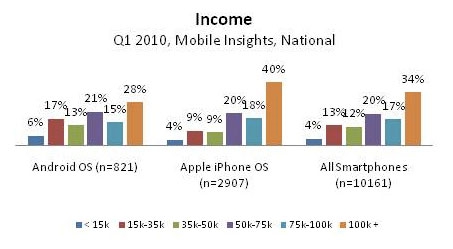
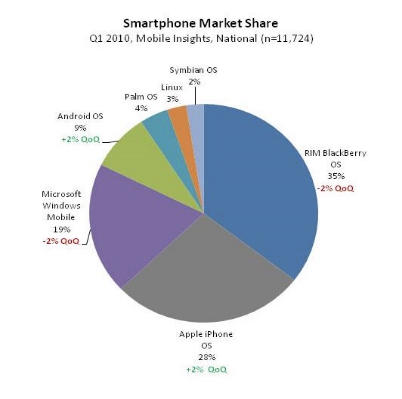
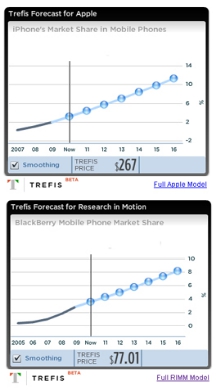
2.2 Iphone global market share.
Apple’s share of the global smartphone market grew to 16.1% in the first calendar quarter of 2010, according to new numbers released Friday by research firm IDC. The company said that Apple’s 8.8 million iPhones sold during the quarter represent 131.6% year-over-year growth, and resulted in increased market share from 10.9% in Q1 2009 to 16.1% in Q1 2010.
The market as a whole grew a whopping 56.7% to 54.7 million smartphones sold by all vendors, 87.3% of which were sold by the top five vendors in the industry. Nokia remained the top smartphone vendor, with 39.3% market share, unchanged year-over-year. Research in Motion remained number two, with 19.4% of the market, with Apple coming in at number three.
That’s well ahead of Android OS device maker HTC, which was number four with 4.8% of the market. Motorola rounded out the top five with 4.2% market share.
With growth numbers so high, it’s no surprise that smartphones also encroached on overall cell phone sales numbers. IDC said that smartphone sales represented 18.8% of all cell phones sold around the planet, up from 14.4% in the March quarter of 2009.
The research firm also pointed out that the impressive growth figures for the industry serve to highlight just how bad the economy was in the first quarter of 2009.
“The smartphone market’s growth is impressive too when contrasted to the 38% growth in the fourth quarter,” the company said in a statement, “which is typically the strongest of the year. This demonstrates the tremendous potential of the market and the depths to which it plunged in the first quarter of last year.”
2.3 Apple Reports second Quarter Results
CUPERTINO, California—April 20, 2010—Apple® today announced financial results for its fiscal 2010 second quarter ended March 27, 2010. The Company posted revenue of $13.50 billion and net quarterly profit of $3.07 billion, or $3.33 per diluted share. These results compare to revenue of $9.08 billion and net quarterly profit of $1.62 billion, or $1.79 per diluted share, in the year-ago quarter. Gross margin was 41.7 percent, up from 39.9 percent in the year-ago quarter. International sales accounted for 58 percent of the quarter’s revenue.
Apple sold 2.94 million Macintosh® computers during the quarter, representing a 33 percent unit increase over the year-ago quarter. The Company sold 8.75 million iPhones in the quarter, representing 131 percent unit growth over the year-ago quarter. Apple sold 10.89 million iPods during the quarter, representing a one percent unit decline from the year-ago quarter.
“We’re thrilled to report our best non-holiday quarter ever, with revenues up 49 percent and profits up 90 percent,” said Steve Jobs, Apple’s CEO. “We’ve launched our revolutionary new iPad and users are loving it, and we have several more extraordinary products in the pipeline for this year.”
“Looking ahead to the third fiscal quarter of 2010, we expect revenue in the range of about $13.0 billion to $13.4 billion and we expect diluted earnings per share in the range of about $2.28 to $2.39,” said Peter Oppenheimer, Apple’s CFO.
Apple will provide live streaming of its Q2 2010 financial results conference call beginning at 2:00 p.m. PDT on April 20, 2010 at www.apple.com/quicktime/qtv/earningsq210/. This webcast will also be available for replay for approximately two weeks thereafter.
This press release contains forward-looking statements including without limitation those about the Company’s estimated revenue and earnings per share. These statements involve risks and uncertainties, and actual results may differ. Risks and uncertainties include without limitation the effect of competitive and economic factors, and the Company’s reaction to those factors, on consumer and business buying decisions with respect to the Company’s products; continued competitive pressures in the marketplace; the ability of the Company to deliver to the marketplace and stimulate customer demand for new programs, products, and technological innovations on a timely basis; the effect that product transitions, changes in product pricing or mix, and/or increases in component costs could have on the Company’s gross margin; the inventory risk associated with the Company’s need to order or commit to order product components in advance of customer orders; the continued availability on acceptable terms, or at all, of certain components and services essential to the Company’s business currently obtained by the Company from sole or limited sources; the effect that the Company’s dependency on manufacturing and logistics services provided by third parties may have on the quality, quantity or cost of products manufactured or services rendered; the Company’s reliance on the availability of third-party digital content and applications; the potential impact of a finding that the Company has infringed on the intellectual property rights of others; the Company’s dependency on the performance of distributors and other resellers of the Company’s products; the effect that product and service quality problems could have on the Company’s sales and operating profits; the Company’s reliance on sole service providers for iPhone® in certain countries; the continued service and availability of key executives and employees; war, terrorism, public health issues, and other circumstances that could disrupt supply, delivery, or demand of products; potential litigation from the matters investigated by the special committee of the board of directors and the restatement of the Company’s consolidated financial statements; and unfavorable results of other legal proceedings. More information on potential factors that could affect the Company’s financial results is included from time to time in the Company’s public reports filed with the SEC, including the Company’s Form 10-K, as amended, for the fiscal year ended September 26, 2009, its Form 10-Q for the quarter ended December 26, 2009, and its Form 10-Q for the quarter ended March 27, 2010 to be filed with the SEC. The Company assumes no obligation to update any forward-looking statements or information, which speak as of their respective dates.
Apple ignited the personal computer revolution with the Apple II, then reinvented the personal computer with the Macintosh. Apple continues to lead the industry with its award-winning computers, OS X operating system, and iLife, iWork and professional applications. Apple leads the digital music revolution with its iPods and iTunes online store, has reinvented the mobile phone with its revolutionary iPhone and App Store, and has recently introduced its magical iPad which is defining the future of mobile media and computing devices. 


2.4 Markets Abroad
Apple got 58% of its revenue from outside the Americas region in the latest quarter, excluding sales at Apple stores. While Apple doesn't break out sales for specific products by region, Chief Operating Officer Tim Cook said in the quarterly earnings call that iPhone sales were seeing strong triple-digit growth in Europe and Asia. Apple called it "the fastest international roll out" for iPhone.
Last year, Apple introduced the iPhone 3GS in June and the phone was available in 64 countries at the end of September 2009, but it wasn't yet available in countries like South Korea and China, which are the fastest growing markets today.
Tim Bajarin, an analyst at researcher Creative Strategies, estimates that about 55% of iPhone sales are now made outside of the U.S., from about 25% two years ago. Added Kaufman Bros. analyst Shaw Wu, "In the U.S., the only way to get a substantial amount of subscribers is through another carrier. [Apple] needs this accelerated [international] timetable to sustain growth."
France, Germany, the U.K. and Japan, where Apple will offer the iPhone 4 simultaneously with the U.S., are some of the company's fastest growing markets. Research firm Canalys estimated that Apple's smart phone market share in France hit 40.5% in the first quarter, up from 11.5% in 2008.
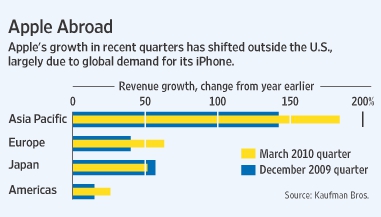
Conclusion
Based on the research we did, we can easily find out that I phone is the most revolution product in the Smartphone history. By only one product, Apple already beat the Nokia and Motorola became the biggest Smartphone manufacture in the world. It have improved the whole revenue income of this year. In 2009, the iPhone became the most popular mobile phone in America. It's Steve Jobs' kingdom now, and all of us who've been convinced to buy his fine products have become subjects in the United States of Apple.

